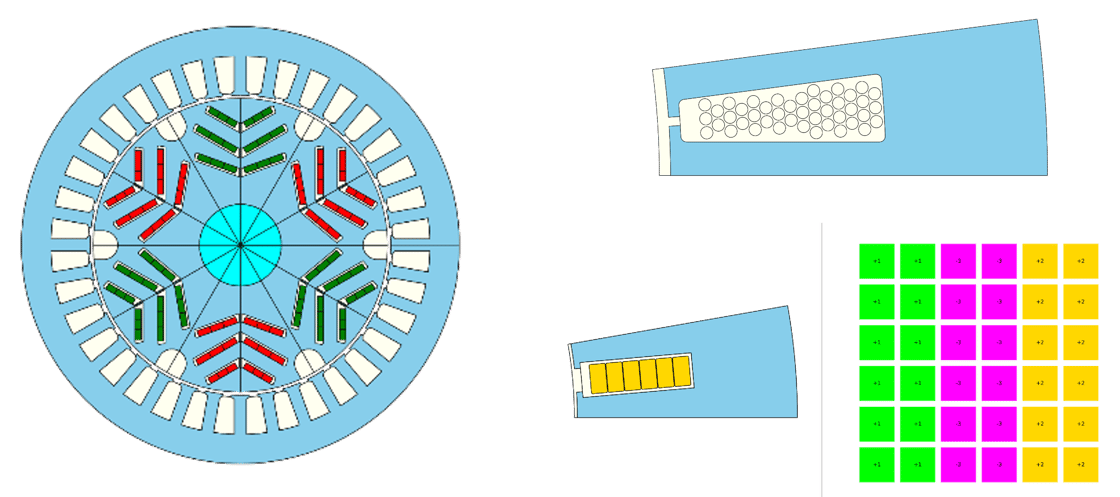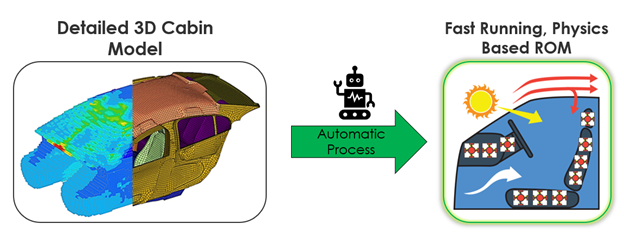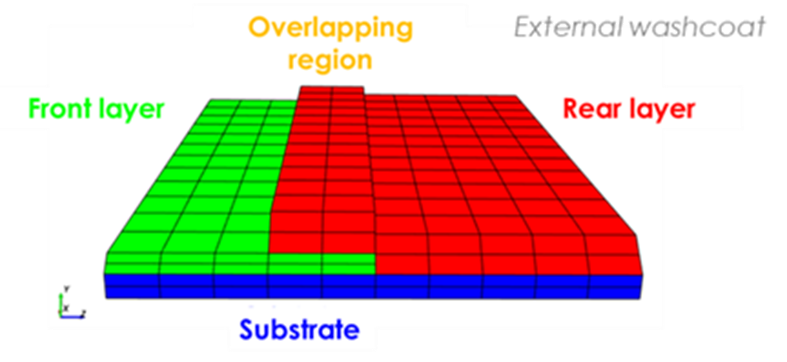|
Gamma Technologies is pleased to announce that GT-SUITE v2025.1 is ready for download. Here are some selected highlights from v2025 and 2025.1! |
Batteries: Automatic Creation of Electrical and Thermal Battery Pack Model in GEM-3D
|
Motors: New, More Powerful Template Geometries in GT-FEMAGGT-FEMAG
|
Motors: New Coupling between Electromagnetics and Thermal in GT-FEMAGGT-FEMAG |
Thermal Fluids: Optimize Passenger Comfort and Range in Real-time using an Auto-generated Cabin ROM
|
Exhaust Aftertreatment: GT-xCHEM offers Cutting-edge Advancements in Exhaust Aftertreatment ModelingGT-xCHEM now offers advanced exhaust after-treatment simulation capabilities including:
Also, users can now quickly and automatically convert their exothermia suite models to GT-xCHEM with the use of ET-Suite Migrator. A comparison tool is now available to automatically create graphs and compare exothermia suite and GT-xCHEM simulation results. Productivity/User Experience: New “Smart Mode” to Run Simulations Efficiently
Model Management: Signal Explorer
|

 GEM-3D now provides a new workflow to convert CAD geometry to battery cells (
GEM-3D now provides a new workflow to convert CAD geometry to battery cells ( has new template geometries for both rotors and stators. For rotors, a new interior permanent magnet geometry template for V-shape magnets now allows 1, 2, 3, or 4 pairs of concentric V-angled magnets. For stators, new geometry templates allow individual wires to be defined (round or hairpin) and AC winding losses can now be calculated with either a finite element approach or an analytical approach.
has new template geometries for both rotors and stators. For rotors, a new interior permanent magnet geometry template for V-shape magnets now allows 1, 2, 3, or 4 pairs of concentric V-angled magnets. For stators, new geometry templates allow individual wires to be defined (round or hairpin) and AC winding losses can now be calculated with either a finite element approach or an analytical approach. also offers the ability to run a 2D finite element thermal model to calculate the temperature distribution alongside the built-in electromagnetic motor models. This now allows hot spots to be detected and to calculate steady state max torque while adhering to temperature limits of the magnets and windings. Additionally, a thermal network including a map-based motor can be exported to run transient electro-thermal models in an integrated simulation.
also offers the ability to run a 2D finite element thermal model to calculate the temperature distribution alongside the built-in electromagnetic motor models. This now allows hot spots to be detected and to calculate steady state max torque while adhering to temperature limits of the magnets and windings. Additionally, a thermal network including a map-based motor can be exported to run transient electro-thermal models in an integrated simulation. GT can now automatically generate a physics-based, real-time capable 1D reduced order model (ROM) from a detailed 3D GT-TAITherm cabin model. This combines GT-SUITE’s and ThermoAnalytics, Inc.’s technologies, empowering users to quickly develop control strategies and evaluate various solutions to optimize passenger comfort and range. Learn more about this feature in this
GT can now automatically generate a physics-based, real-time capable 1D reduced order model (ROM) from a detailed 3D GT-TAITherm cabin model. This combines GT-SUITE’s and ThermoAnalytics, Inc.’s technologies, empowering users to quickly develop control strategies and evaluate various solutions to optimize passenger comfort and range. Learn more about this feature in this 
.png?upscale=true&width=1120&upscale=true&name=image%20(17).png) A new Run Simulation Wizard with Smart Mode is available for users to try. Smart Mode intelligently selects the most efficient execution method (local or local distributed) for your model. GT will automatically handle the details – no need to manually setup distributed computing. The Simulation Dashboard now fully supports both run modes for a consistent, user-friendly experience.
A new Run Simulation Wizard with Smart Mode is available for users to try. Smart Mode intelligently selects the most efficient execution method (local or local distributed) for your model. GT will automatically handle the details – no need to manually setup distributed computing. The Simulation Dashboard now fully supports both run modes for a consistent, user-friendly experience..png?upscale=true&width=604&upscale=true&name=image%20(16).png) Large, modular, system models have become increasingly more common as companies make the shift to more and more virtual testing. Signal flow in these modular models can become complex and very difficult to follow. GT’s new Signal Explorer provides a holistic view of signal and RLT usage across an entire model (including subassemblies, compounds, etc.). This includes both a “system view” of the signal flow between various files in a modular system model and also a detailed view to see specific information on each individual signal.
Large, modular, system models have become increasingly more common as companies make the shift to more and more virtual testing. Signal flow in these modular models can become complex and very difficult to follow. GT’s new Signal Explorer provides a holistic view of signal and RLT usage across an entire model (including subassemblies, compounds, etc.). This includes both a “system view” of the signal flow between various files in a modular system model and also a detailed view to see specific information on each individual signal.